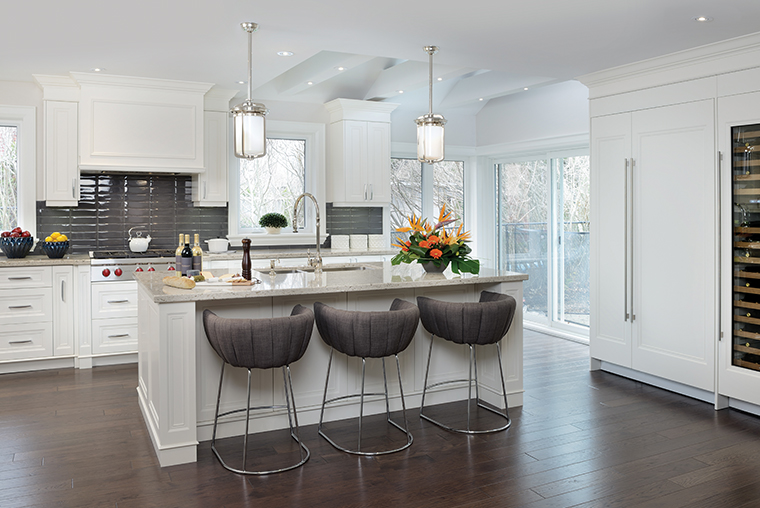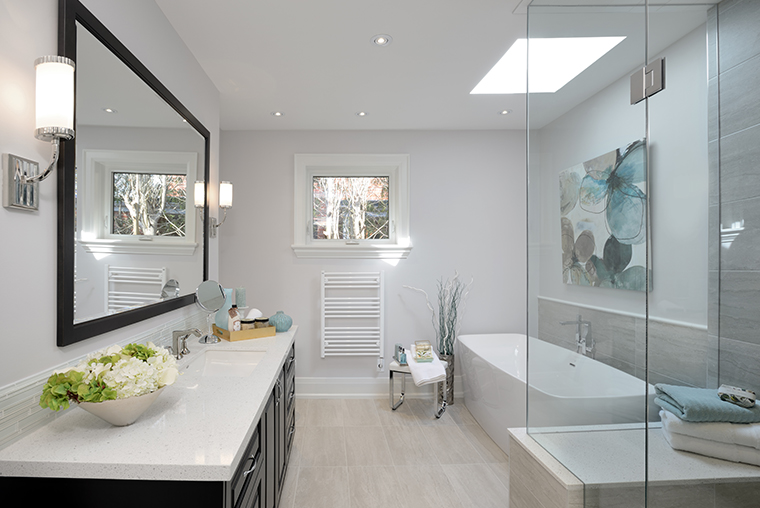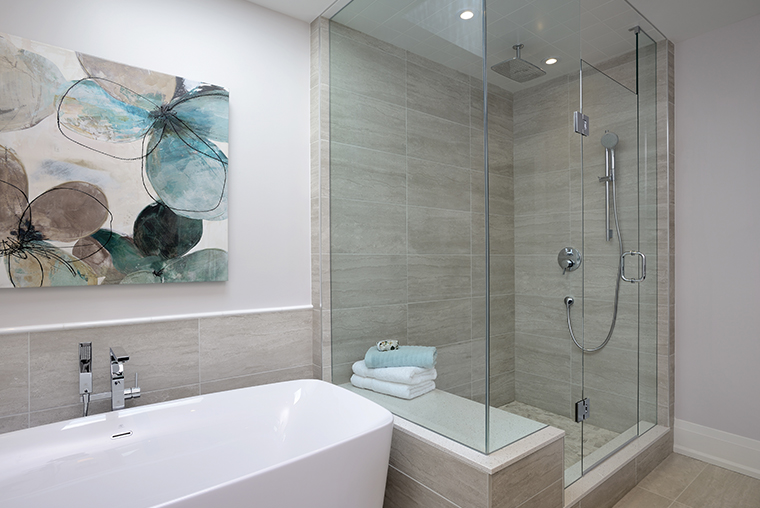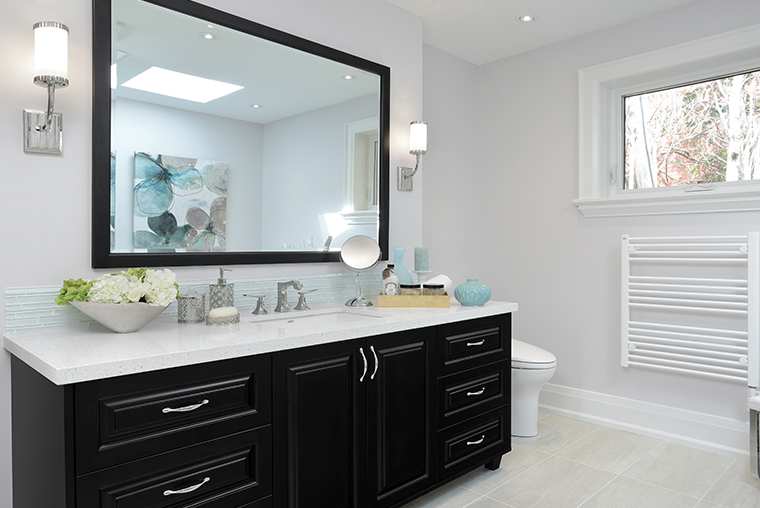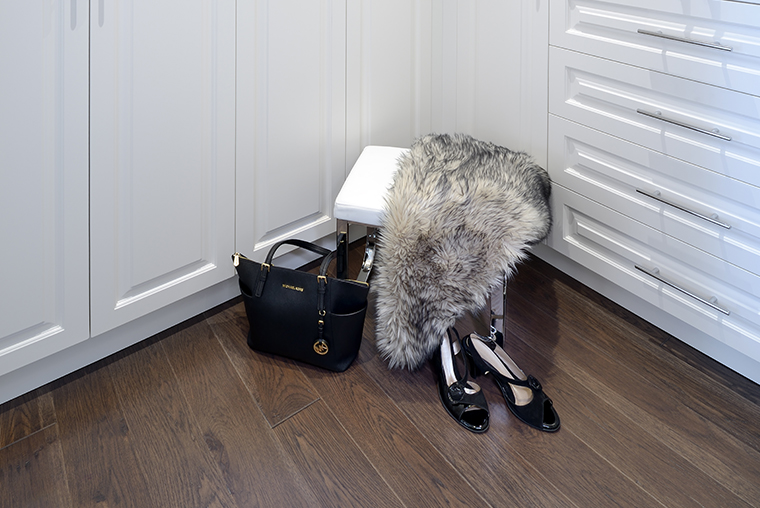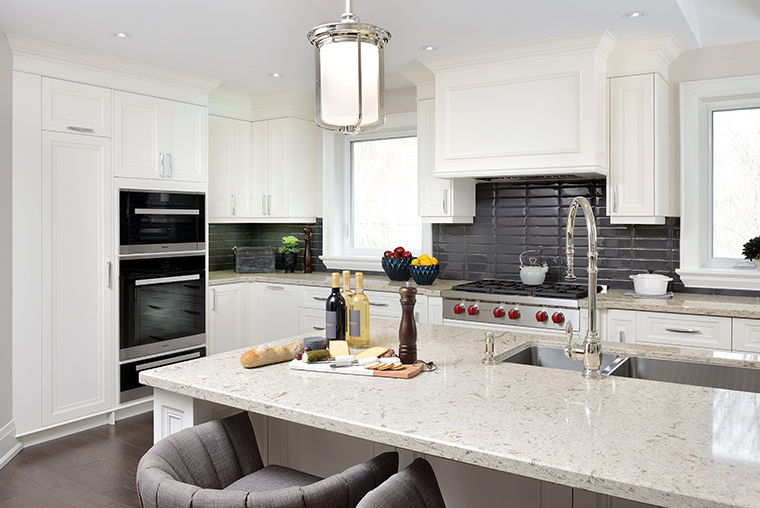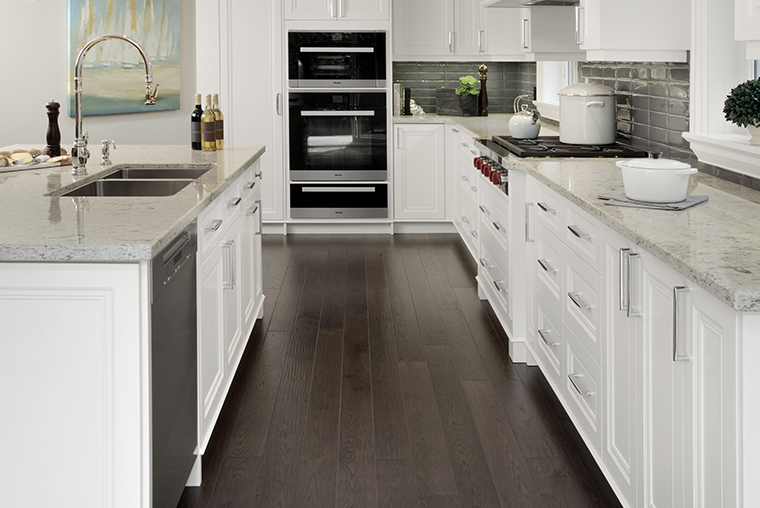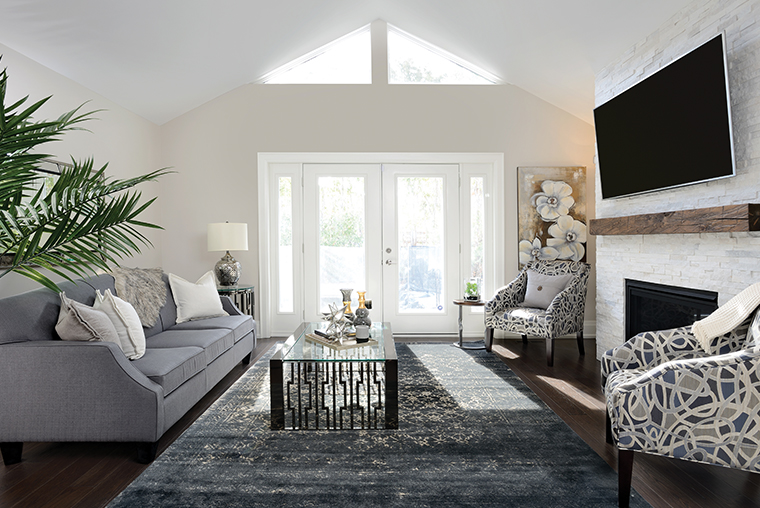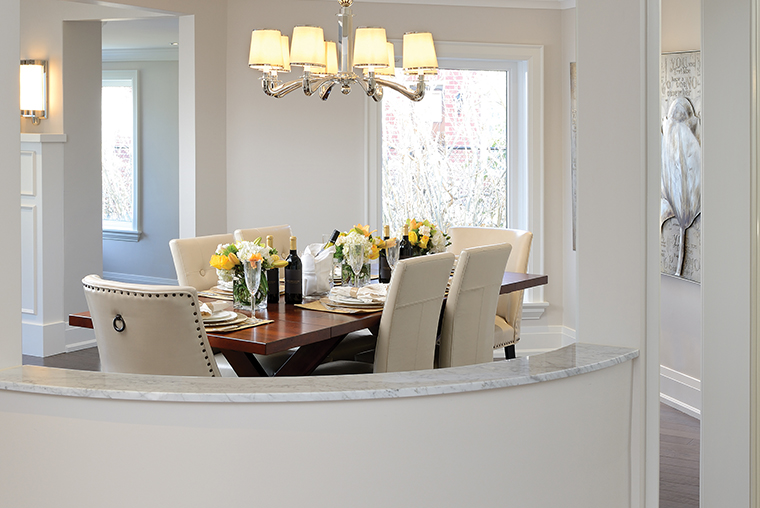A 1970s-era home is transformed into a practical structure for today
BY SUSAN SEMENAK
PHOTOGRAPHY: LARRY ARNAL
STYLING: LISA MAIDA
The demolition crew moves in. The aging bungalow is demolished. A big new luxury home goes up. That’s the usual narrative.
“Bungalows in Toronto have fallen out of favour with homebuyers. They are a rare breed, almost extinct,” says Gene Maida, founder and president of Georgian Custom Renovations. “Usually they are demolished to make room for two-storey monster homes.”
But there’s a new story taking shape. Maida says he is noticing renewed interest in these iconic 20th century homes among buyers looking to downsize without resorting to condo living. They are attracted by the vintage bungalow’s solid construction and the intimacy of containing all the rooms on a single floor, with good access to outdoor space. What’s more, the old homes are often located on streets lined with mature trees, in desirable neighbourhoods with ample lots and nearby services. Those that are saved and renovated increase in value exponentially, he says.
“Bungalows have many advantages over two-storey homes,” Maida says. “With living contained on one level, they are more family-friendly. Safer for young kids and more accessible for seniors.”
He points to the “ugly-duckling” bungalow his firm recently transformed into a luxury home for a client and her teenage daughter.
At first glimpse the 4,000-square-foot 1970s brick house in the Bayview-York Mills area seemed like a hopeless mess. “It was so horrible that your first instinct was to tear it down,” Maida recalls. 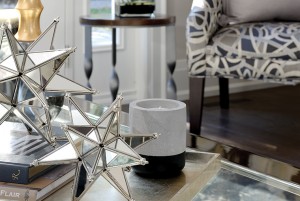
But the homeowner who had purchased it had a fondness for its elegant, nostalgic feel. She liked the traditional layout and insisted that Maida’s company overhaul it.
After a nine-month, $1-million transformation, the building is a light-filled, updated luxury home that fits comfortably in this neighbourhood of high-end 10,000-square-foot houses. “The changes are dramatic and drastic. It really is an awesome house now,” Maida says.
The first job was to tackle the house’s tired sandstone-brick exterior by cladding it with stucco and raising and replacing the roof. Small windows were expanded to admit maximum light. Transoms were installed in the family room, along with French doors and sidelights. Skylights were added to the kitchen and master bathroom.
Inside, the bungalow was coaxed out of the 70s. A curved wall of retro glass bricks in the entranceway had to go. So did the pink tiles in the bathroom. Two existing wood-burning fireplaces were replaced with clean-burning, energy-efficient gas fireplaces. A laundry room that squatted indecorously off the old kitchen was relegated to the basement, where it is now located – along with plenty of storage – just off the rec room, which also serves as a home theatre.
To create an airy living space, Maida tore down the walls between kitchen and family room. He turned three small bedrooms into two spacious ones. But he didn’t open things up entirely, leaving tall, wide archways between the kitchen, dining room and living room for a hint of separation.
What the homeowner loved most about the original bungalow was its dining room, a feature lost in many new homes where living areas are conjoined in a single open space. She wanted a special place reserved for family dinners, a formal dining room like the ones of the past.
An accomplished home cook, she also wanted a functional and spacious kitchen designed not just for beauty, but for functionality. It features a wall of appliances, including a warming drawer, wall oven and steam oven, plus a wine cooler and ample storage in a pantry with pull-out-drawers. 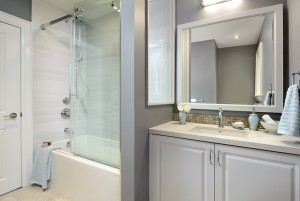
Maida says he paid special attention to the ceiling in the kitchen, opening the space with a coffered surface and skylight. Structural overhead beams were left exposed to add architectural interest. “For a long time, the ceiling was ignored, but now we treat it as a fifth wall, using beams and waffled or coffered ceilings as a way of adding drama and height to a space,” he says.
Thinking back on his first impressions of the bungalow, Maida laughs. “It’s like an ugly duckling that became a beautiful swan.”

